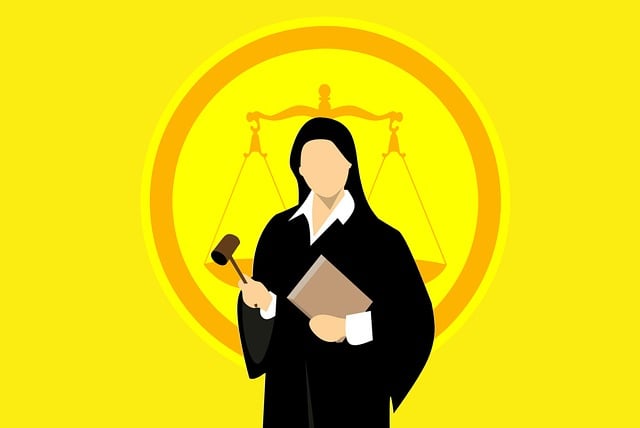Oregon's Child Welfare Court is a specialized jurisdiction focusing on protecting vulnerable youth through cases involving abuse, neglect, adoption, and foster care. Parents, guardians, and legal professionals must understand the complex court procedures to actively participate in cases that significantly impact children's futures and family dynamics. Key steps include DHS-filed petitions, hearings, multiple court stages, and collaborative efforts among parents, social workers, and attorneys. Decisions prioritize the child's best interests, stability, safety, and emotional needs, with a comprehensive appeal process available for challenges to initial decisions. A guide on court procedures and navigation is essential for all involved parties.
“Navigating the Oregon Child Welfare Court: A Comprehensive Guide for All Stakeholders” delves into the intricacies of this critical system. This article serves as your go-to resource for understanding the Oregon Child Welfare Court process, from petitioning to court procedures and key participant roles. Gain valuable insights on how cases unfold, decisions are made, and appeals are handled. Whether you’re a parent, guardian, social worker, or attorney, these procedural insights are essential for effectively navigating the court system and ensuring the best outcomes for involved children.
- What is the Oregon Child Welfare Court?
- Who Can Petition the Court and When?
- Court Procedures in Oregon Child Welfare Cases
- Roles of Key Participants: Parents/Guardians, Social Workers, and Attorneys
- Understanding the Court's Decisions and Appeal Process
What is the Oregon Child Welfare Court?

The Oregon Child Welfare Court is a specialized court designed to handle cases involving the welfare and protection of children within the state. This court plays a crucial role in ensuring the safety, well-being, and permanency of vulnerable youth by overseeing various legal proceedings related to child abuse, neglect, adoption, and foster care. In Oregon, the Child Welfare Court is committed to providing fair and efficient procedures that safeguard the best interests of children while also supporting their families.
Navigating court procedures in Oregon can be complex, but understanding the process is essential for all involved parties. The court operates with a structured agenda, following specific guidelines and laws to ensure consistency and justice. By delving into these procedural insights, parents, guardians, and legal professionals can better comprehend their rights and responsibilities, enabling them to actively participate in cases that shape the future of Oregon’s youth.
Who Can Petition the Court and When?

In Oregon, various individuals and organizations can petition the court regarding child welfare matters, including government agencies, such as the Department of Human Services (DHS), and private citizens. Anyone with legitimate concerns about a child’s safety, well-being, or appropriate living arrangements can file a petition with the court. This may include reports of abuse, neglect, or situations where a child is at risk of harm.
Petitions are typically filed when existing support systems or interventions are insufficient to address the child’s needs. Court procedures in Oregon aim to ensure that all efforts to keep families together have been exhausted before removing a child from their home. Understanding the court process and navigating court procedural insights is crucial for those involved, as it directly impacts a child’s future and family dynamics.
Court Procedures in Oregon Child Welfare Cases

In Oregon, the child welfare court system is designed to ensure the safety and well-being of vulnerable children while also aiming for family reunification whenever possible. Understanding the court procedures is crucial for all involved parties—parents, guardians, foster families, and social workers—to navigate this complex process effectively. The initial step often involves a petition being filed with the court, outlining the reasons for intervention based on evidence gathered by Oregon’s Department of Human Services (DHS). This sets in motion a series of court hearings designed to assess the child’s safety and determine the most suitable plan for their future.
Court proceedings can be intricate, involving various stages such as initial hearings, fact-finding sessions, dispositional hearings, and periodic reviews. Each stage has specific goals: to establish the truth about the child’s circumstances, decide on temporary arrangements, implement a case plan for family reunification or alternative permanent placements, and regularly monitor progress. A key aspect of navigating these procedures is staying organized, keeping detailed records, and actively participating in court-ordered services and visits. This guide aims to provide insights into Oregon’s court processes, ensuring that all parties involved have a clearer understanding of their role and the overall journey ahead.
Roles of Key Participants: Parents/Guardians, Social Workers, and Attorneys

In Oregon child welfare court, various key participants play distinct roles in ensuring the best interests of the child are at the forefront of every decision. Parents or Guardians are central to the process, as they have a fundamental responsibility to care for and protect their children. During court proceedings, they are expected to collaborate with social workers and attorneys to develop plans that address any identified issues affecting the child’s safety, well-being, and future stability. Open communication and active participation are crucial, as it helps the court gain valuable insights into the family dynamics and unique needs of the child.
Social workers act as professionals charged with conducting thorough assessments, investigating allegations, and presenting evidence to the court. They work closely with families to provide support services, offer resources, and assist in creating plans for the child’s care. Their expert opinions are invaluable in guiding the court through complex situations. Attorneys, on the other hand, represent parents or guardians, advocating for their rights and interests while also ensuring the legal process is followed accurately. They play a critical role in navigating court procedures Oregon and presenting arguments to protect the best interests of their clients, ultimately contributing to a fair and just outcome in the child welfare court guide.
Understanding the Court's Decisions and Appeal Process

In Oregon child welfare courts, decisions are made with a primary focus on the best interests of the child. This involves balancing factors such as stability, safety, and the child’s need for love and support. The court process in Oregon is designed to be comprehensive and fair, ensuring that all parties involved have the opportunity to present their cases effectively. Understanding court procedures Oregon is crucial for parents, guardians, and legal representatives navigating this complex system.
The appeal process plays a significant role in ensuring justice within the Oregon child welfare court system. Parents or guardians who disagree with a decision can file an appeal, challenging specific findings or conclusions. This appeals process allows for further evaluation of evidence and arguments presented during the initial proceedings. Court procedural insights suggest that timely filing and thorough documentation are key to a successful appeal, making it vital to seek legal guidance when navigating these steps.
